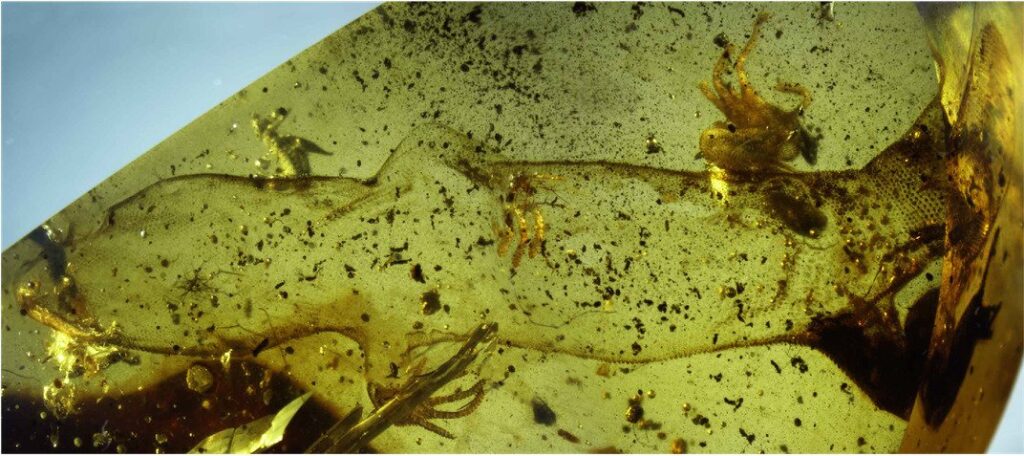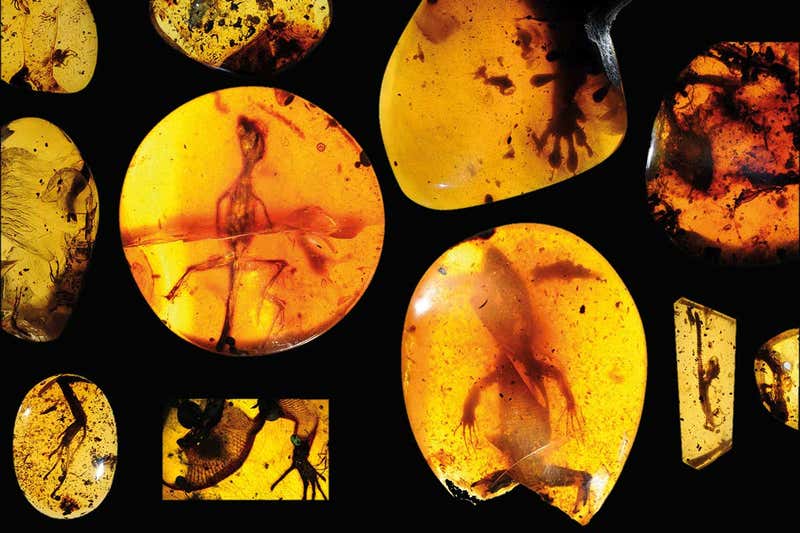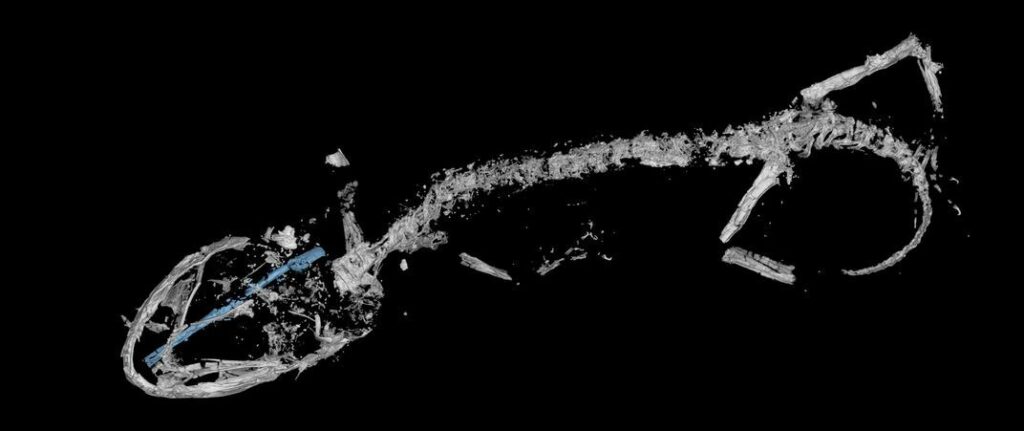This Gecko Has Been Trapped In Amber For 100 Million Years
Researchers at the University of Oregon state and the Natural History Museum in London confirmed that they had found the oldest known gecko fossil with life-like pieces after 100 million years of the amber-buried skeleton.

The tiny foot of this ancient lizard also displays the tiny “lamellae” or sticky headdress hairs, that to this day give modern geckos their unusual ability to cling to surfaces or run across a ceiling. Research programs around the world have tried to mimic this bizarre adhesive capability, with limited success.
This gecko’s running days are over, however, as only the foot, toes, and part of a tail are left in the stone. The rest might have become lunch for a small dinosaur or another predator during an ancient fight in the tropical forests of Myanmar during the Lower Cretaceous Period, from 97 million to 110 million years ago.

The find is at least 40 million years older than the oldest known gecko fossil, shedding additional light on the evolution and history of these ancient lizards that scampered among the feet of giant dinosaurs then and still are common in tropical or sub-tropical regions all over the world.
The findings were just published in Zootaxa, a professional journal.
“It’s the unusual toe pads and clinging ability of some geckos that make them such a fascinating group of animals, so we were very fortunate to find such a well-preserved foot in this fossil specimen,” said George Poinar, Jr., a courtesy professor at OSU and one of the world’s leading experts on insects, plants and other life forms trapped in amber, a semi-precious stone that begins as tree sap.
“There’s a gecko society, gecko clubs, just a lot of interest in these animals because of their unusual characteristics,” Poinar said. “So there are a lot of people pretty excited about this.”
Based on the number of lamellae found on its toe pads, this gecko was probably a very small juvenile of what would have become a comparatively large adult, possibly up to a foot long, the researchers say. Modern geckos get no more than about 16 inches long, although it’s possible there were larger species millions of years ago.
The juvenile gecko found in the fossil was less than an inch in length when it died – possibly by being eaten or attacked since only partial remains were found.
The discovery has been announced as a new genus and species of gecko, now extinct, and has been named Cretaceogekko. It had a striped pattern that probably served as camouflage.
There are more than 1,200 species of geckos in the world today, common in warm or tropical regions, including parts of the southern United States. They are frequently kept as pets, and often are welcome in the homes of some tropical residents because they help control insects. Some are very colorful. They use long tongues to lick, clean, and moisturize their eyes.
“Geckos are territorial, and when I lived in Africa in the early 1980s we used to have them in our house,” Poinar said. “They are pretty friendly and don’t bother humans. Certain individuals would move into the house, we’d give them names, and they would run around the house, catch mosquitoes, help control bugs. They would crawl across the ceiling and look down at you.”
The new study provides evidence that geckos were definitely in Asia by 100 million years ago, and had already evolved their bizarre foot structure at that time. The amber fossil was mined in the Hukawng Valley in Myanmar, and during its life, the gecko probably lived in a moist, tropical forest with ample opportunities for climbing.



The ability of geckos to walk on vertical walls or even upside down is due to the presence of thousands of “setae” on their toes, very tiny, hairlike structures that have tips which attach to surfaces by van der Walls forces. It’s a type of incredibly strong, dry adhesion shared by virtually no other group of animals.
It’s not known exactly how old this group of animals is, and when they evolved their adhesive toe pads. However, the new study makes it clear that this ability was in place at least 100 million years ago, in nature. Modern research programs still have not been able to completely duplicate it.
Scientists at the University of California at Berkeley reported earlier this year that they have developed a new “anti-sliding” adhesive that they said was the closest man-made material yet to mimic the ability of geckos – they think it might help a robot climb up the side of walls. A research team at the Massachusetts Institute of Technology this year created a waterproof adhesive bandage inspired by geckos, that may someday be used in surgery. And of course, geckos have become an advertising icon for the insurance company Geico.
This study is just one of many in which Poinar and colleagues have used the unusual characteristics of amber to study ancient life forms and develop information on the ecology of ancient ecosystems.
As a stone that first begins to form as sap oozing from a tree, amber can trap small insects or other life forms and preserve them in near-perfect detail for observation millions of years later.





